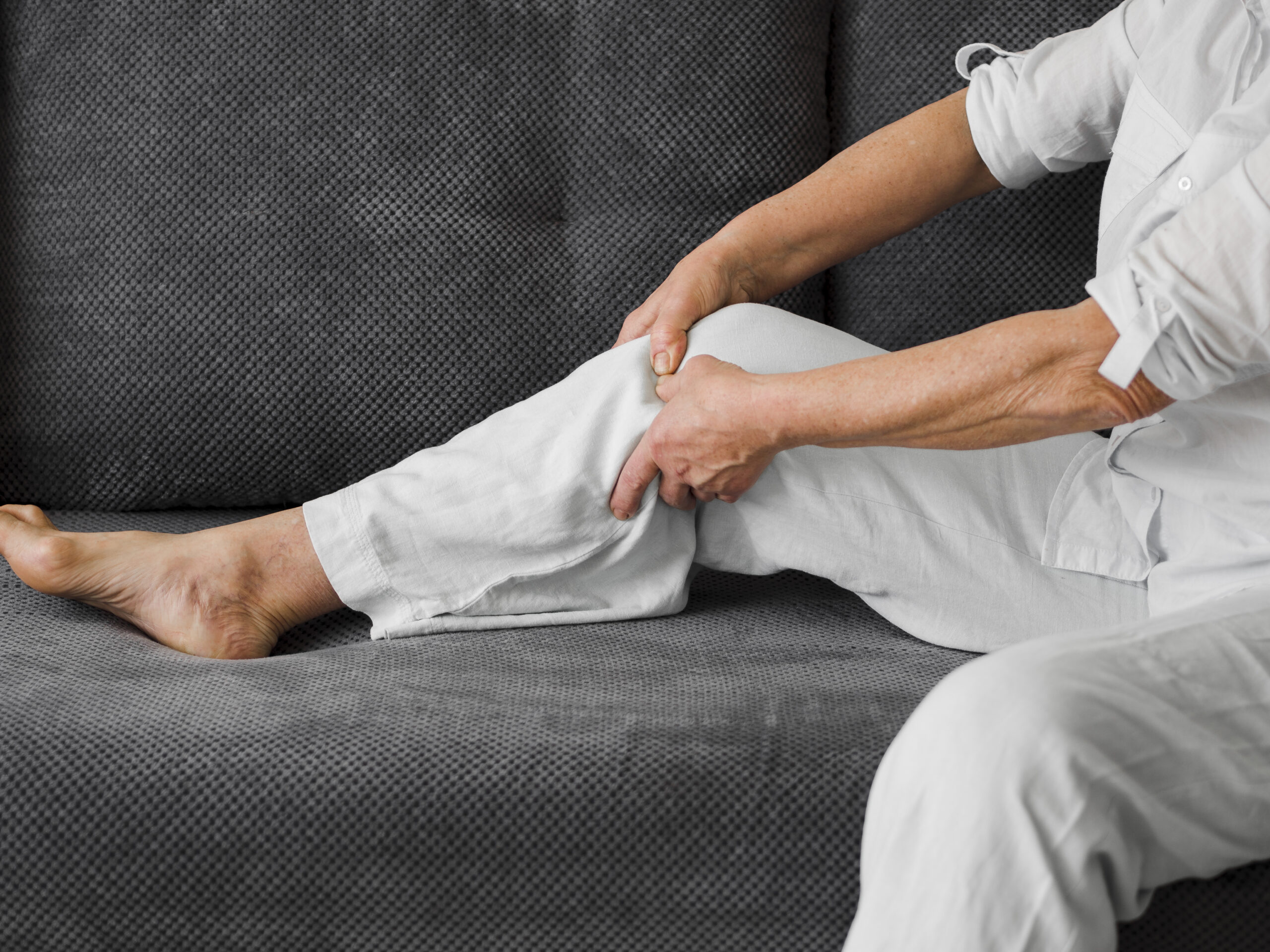Back pain impacts individuals of all ages. Back pain impacts the lower middle and upper the muscles, bones, or other tissues in the back. Back pain is a common problem that can range from minor discomfort to severe, incapacitating pain.
Though back pain is prevalent in adults, people over 30 are more prone to experience it when sleeping and in daily life.
Back discomfort can be caused by various factors, including muscle strain, arthritis, herniated discs, spinal stenosis, and bad posture. Other risk factors for back pain include age, occupation, inactivity, obesity, and certain medical diseases.
This blog will discuss back pain, including its various types, causes, diagnosis, treatment, and prevention.
Causes of Back Pain
- Muscle strain: Back pain can be caused by overuse or injury to the back muscles, ligaments, or tendons. This can be caused by lifting heavy objects or participating in sports.
- Poor posture: Poor posture, such as slouching or sitting for long periods in a hunched position, can strain the muscles and ligaments in the back and cause pain.
- Obesity: Being overweight or obese can put extra strain on the back, leading to pain.
- Stress: Stress and tension can lead to muscle tightness and pain in the back.
- Pregnancy: It is very common back pain while sleeping on the side during pregnancy. Pregnancy can cause back pain due to the added weight and strain on the back muscles.
- Poor sleeping: Sleeping in an awkward position or on a mattress that is too soft or firm can cause lower back pain while sleeping.
- Degenerative disc disease: As we age, the discs in our spine can degenerate, leading to pain and stiffness.
- Osteoporosis: Osteoporosis, a condition in which the bones become weak and brittle, can lead to back pain. You may feel lower or upper back pain while sleeping.
- Spondylolisthesis: This is a condition in which one vertebra in the spine slips out of place, causing pain.
- Sciatica: Sciatica is a type of back pain caused by irritation or compression of the sciatic nerve, which runs from the lower back through the buttocks and down the legs.
- Fibromyalgia: Fibromyalgia is a chronic pain condition that can cause widespread pain and tenderness, including in the back.
Types of Back Pain
There are several types of back pain, including:
Acute back pain: This type is usually severe and comes on suddenly. An injury, such as a muscle strain or sprain, often causes it. With proper treatment, acute back pain usually goes away within a few days or weeks.
Chronic back pain persists for over three months and is often caused by conditions such as arthritis, degenerative disc disease, or spinal stenosis. Chronic back pain may be more difficult to treat and require ongoing management.
Lower back pain: This type of pain affects the lower part of the spine and is the most common back pain. It can be caused by muscle strain, poor posture, or underlying medical conditions.
Upper back pain: This type of pain affects the upper part of the spine and may be caused by muscle strain, poor posture, or underlying medical conditions.
Diagnosis for Back Pain
If you’re experiencing back pain, you must see a healthcare professional for a proper diagnosis and treatment plan. To determine the cause of your back pain, your healthcare professional may ask about your medical history, perform a physical examination, and order imaging tests or other diagnostic tests. Based on the results of these tests, they can provide a diagnosis and recommend a treatment plan. Treatment options for back pain may include medications, physical therapy, and surgery, depending on the cause and severity of the pain. Following your healthcare professional’s recommendations to manage and alleviate your back pain is important.
Treatment for Back Pain
The origin and intensity of the pain mainly determine back pain treatment. They can offer the best treatment alternatives for you based on the reason and degree of your pain. It is possible to manage and alleviate back pain while maintaining a healthy, active lifestyle by obtaining medical treatment and implementing self-care techniques.
Common treatment options include:
- Over-the-counter pain medicines like acetaminophen and ibuprofen can assist with back discomfort. Prescription drugs may be required in some circumstances.
- Physical therapy can help relieve back discomfort and increase flexibility by teaching stretching and strengthening exercises.
- Surgery may be required in extreme situations to restore injured muscles or tendons or to remove a herniated disc.
- TENS (transcutaneous electrical nerve stimulation): TENS uses a device to send low-voltage electrical pulses to the back to decrease pain.
In addition to seeking medical treatment, there are also a few self-care measures you can take to alleviate back pain:
- Apply ice or heat to the affected area
- Use over-the-counter pain relievers, such as acetaminophen or ibuprofen
- Take hot showers or use a heating pad to relax tense muscles
- Avoid activities that exacerbate the pain
- Get plenty of rest and try to maintain good sleep hygiene
Prevention for Back Pain
Here are some tips for managing and preventing back pain:
Practice good posture: Make sure you sit and stand properly to reduce strain on your back. When sitting, use a chair with good lumbar support and keep your feet flat on the ground. When standing, keep your shoulders back and your weight evenly distributed.
Exercise regularly: Staying active can help improve your flexibility and strengthen the muscles in your back. This can help prevent back pain and reduce existing pain’s severity.
Use proper lifting techniques: When lifting heavy objects, use your legs to lift rather than your back. Keep the object close to your body, and avoid twisting your back.
Maintain a healthy weight: Being overweight or obese can put extra strain on your back, so maintaining a healthy weight can help prevent back pain.
Take breaks from sitting: If you have a desk job or spend a lot of time sitting, make sure to take breaks and stretch regularly. This can help prevent muscle strain and keep your back healthy.
Back Pain Treatment at Aveksha Hospital
If you are experiencing back pain, it is important to seek medical treatment to determine the cause and develop an appropriate treatment plan. At Aveksha Hospital, both the orthopedics and physiotherapy departments offer a range of treatment options for managing and relieving back pain.
Orthopedic treatment options may include medications, such as nonsteroidal anti-inflammatory drugs (NSAIDs) or muscle relaxants, to alleviate pain and inflammation. In some cases, orthopedic surgery may be necessary to repair damaged muscles or tendons or to remove a herniated disc.
Physiotherapy treatment options may include exercises to stretch and strengthen the back muscles and heat or cold therapy to reduce inflammation and pain. Massage and other manual therapies may also be used to alleviate back pain.
We have renowned doctors on our team, such as Dr. Aditya Bhalla and Dr. Rakesh Thakur.,
Back pain doctor near Vidyaranyapura, Bengaluru, available at Aveksha Hospital. Book your appointment today at 80 4727 7770






